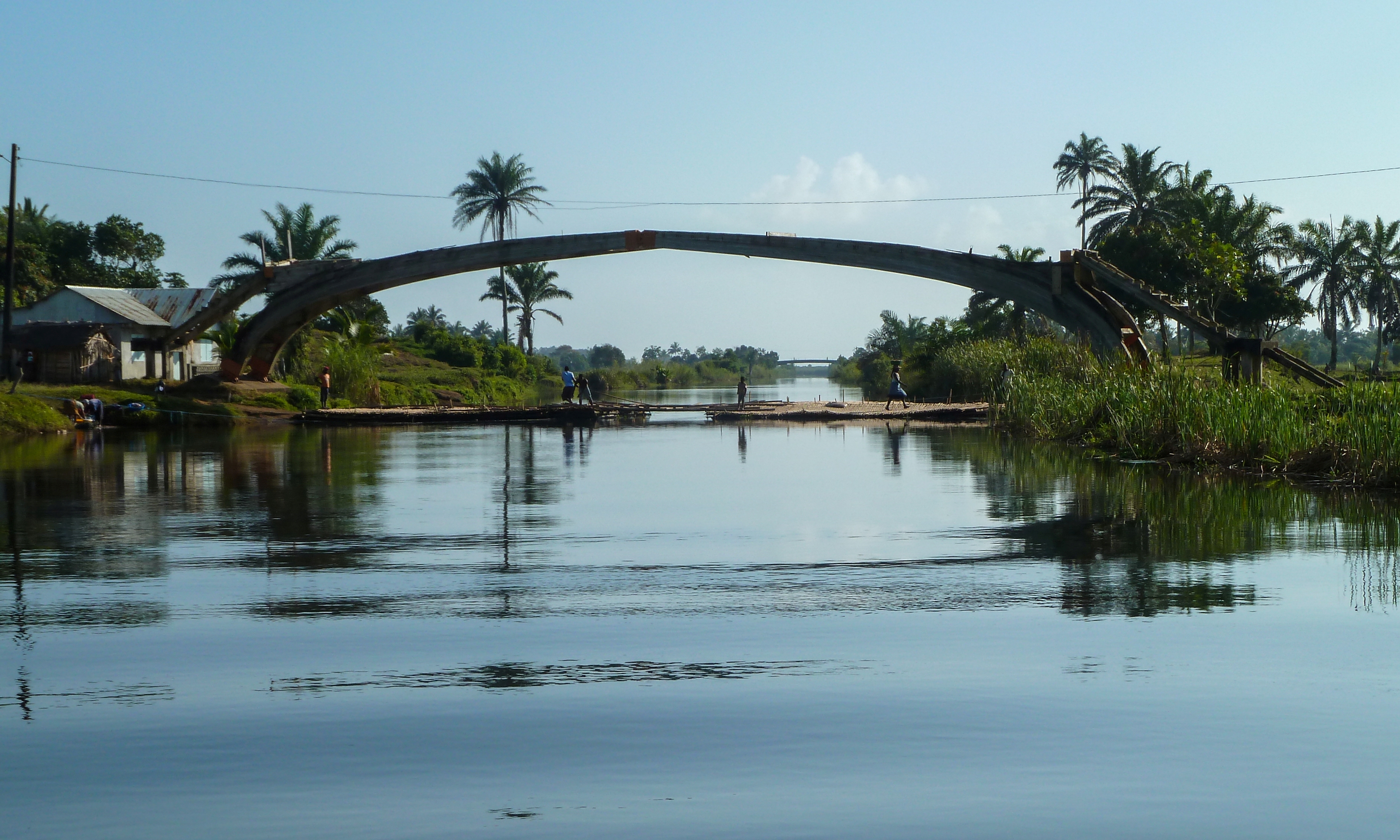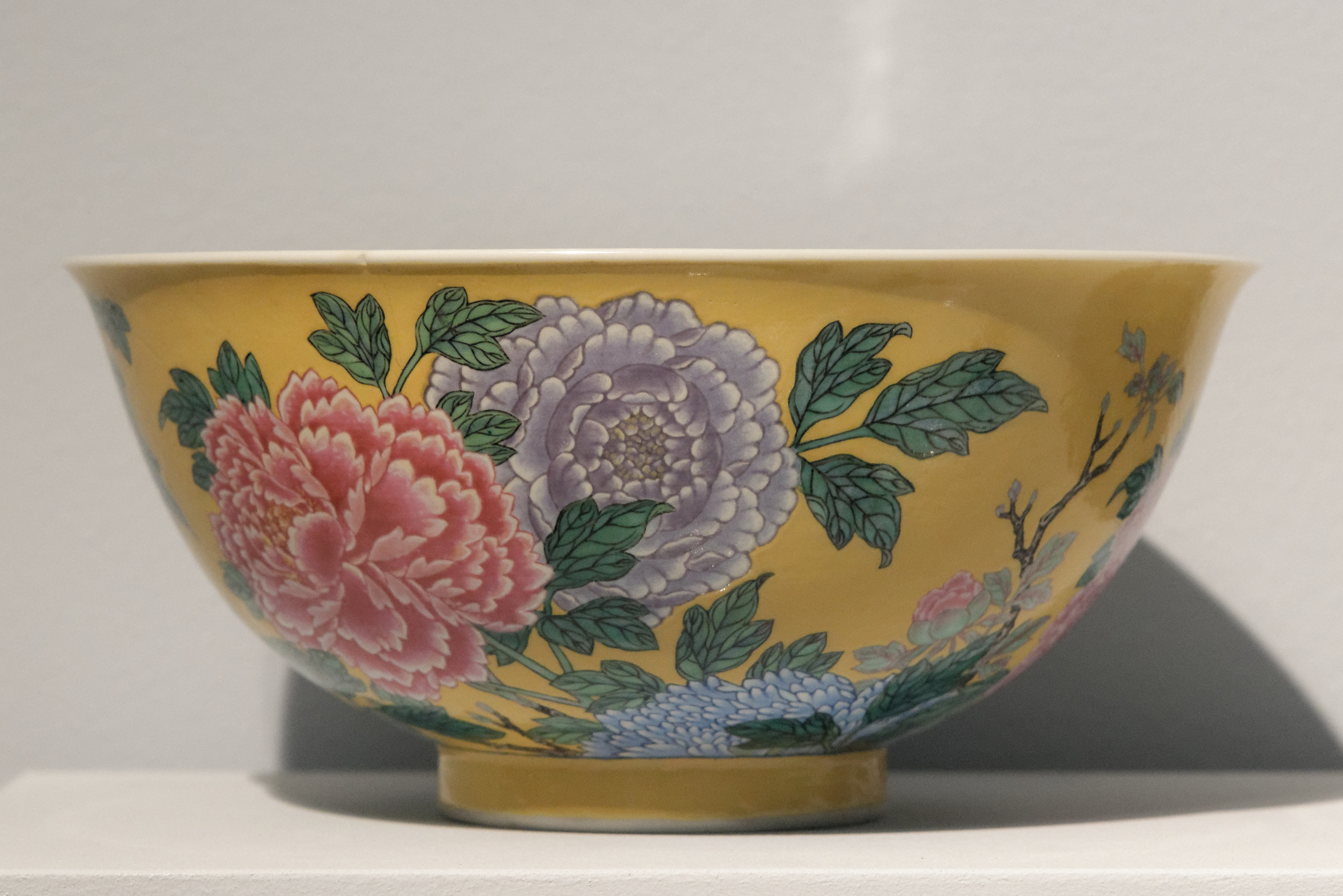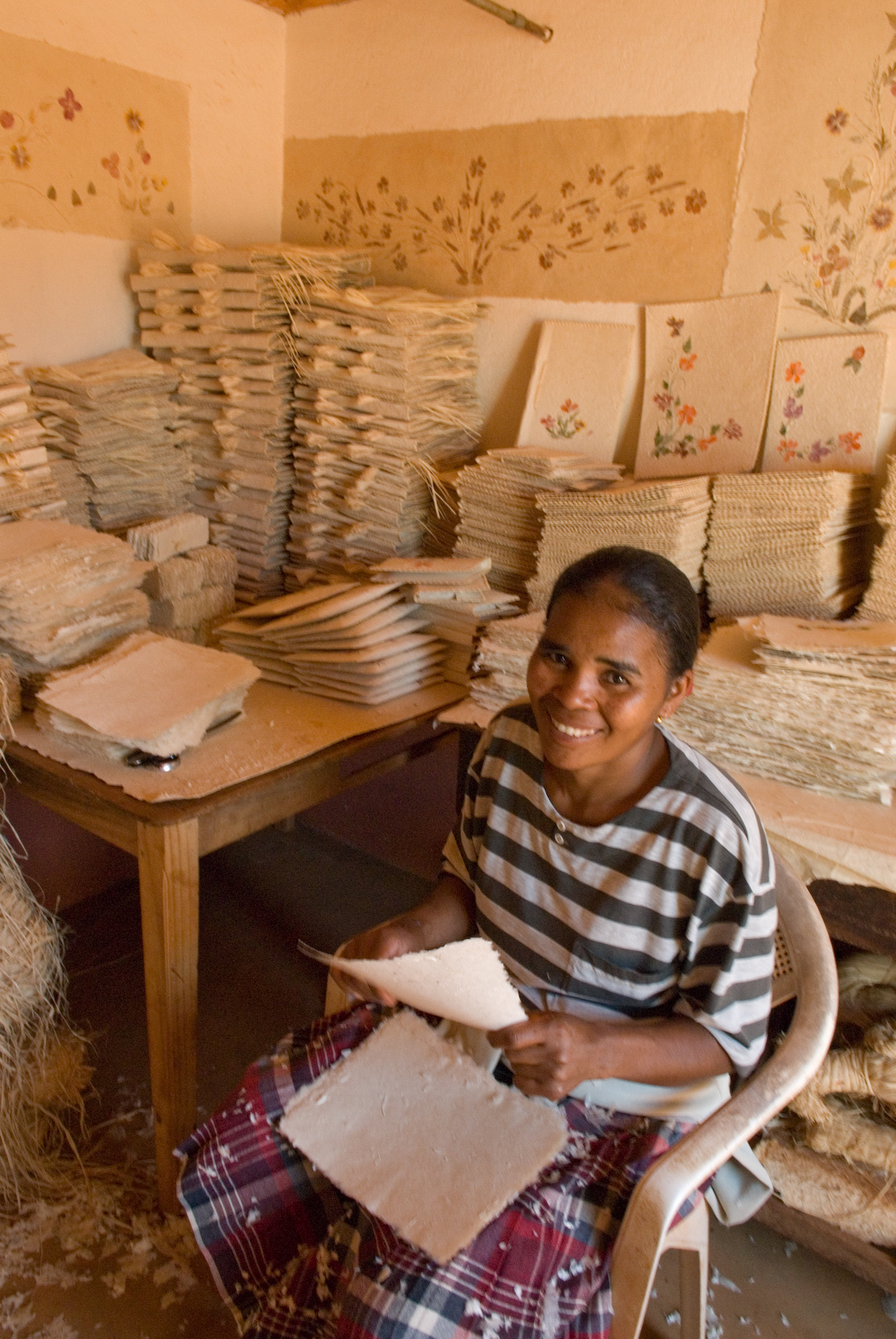|
Tanala Kingdom
The Tanala or Antagnala are a Malagasy ethnic group that inhabit a forested inland region of south-east Madagascar near Manakara. Their name means "people of the forest." Tanala people identify with one of two sub-groups: the southern Ikongo group, who managed to remain independent in the face of the expanding Kingdom of Imerina in the 19th century, or the northern Menabe group, who submitted to Merina rule. Both groups trace their origin back to a noble ancestor named Ralambo, who is believed to be of Arab descent. They were historically known to be great warriors, having led a successful conquest of the neighboring Antemoro people in the 18th century. They are also reputed to have particular talent in divination through reading seeds or through astrology, which was brought to Madagascar with the Arabs. Tanala social structure is characterized by a harmonious interrelationship between the nobles of the Tanala who migrated into the forest where they settled, and the commoner chie ... [...More Info...] [...Related Items...] OR: [Wikipedia] [Google] [Baidu] |
Tanala Dialect
Tanala is a dialect of Malagasy spoken by Tanala people in Madagascar Madagascar, officially the Republic of Madagascar, is an island country that includes the island of Madagascar and numerous smaller peripheral islands. Lying off the southeastern coast of Africa, it is the world's List of islands by area, f .... Classification Tanala or Antagnala language belongs to the Austronesian language family and one of dialects of the subgroup Plateaux Malagasy. Location Tanala is spoken in the Tanala region of Vatovavy-Fitovinany.http://olac.ldc.upenn.edu/language/plt Vocabulary References {{Reflist East Barito languages ... [...More Info...] [...Related Items...] OR: [Wikipedia] [Google] [Baidu] |
Ethnic Groups Of Madagascar Map
An ethnicity or ethnic group is a group of people with shared attributes, which they collectively believe to have, and long-term endogamy. Ethnicities share attributes like language, culture, common sets of ancestry, traditions, society, religion, history or social treatment. Ethnicities may also have a narrow or broad spectrum of genetic ancestry, with some groups having mixed genetic ancestry. ''Ethnicity'' is sometimes used interchangeably with ''nation'', particularly in cases of ethnic nationalism. It is also used interchangeably with '' race'' although not all ethnicities identify as racial groups. By way of assimilation, acculturation, amalgamation, language shift, intermarriage, adoption and religious conversion, individuals or groups may over time shift from one ethnic group to another. Ethnic groups may be divided into subgroups or tribes, which over time may become separate ethnic groups themselves due to endogamy or physical isolation from the parent group. Co ... [...More Info...] [...Related Items...] OR: [Wikipedia] [Google] [Baidu] |
Barito Languages
The Barito languages are around twenty Austronesian languages of Indonesia (Borneo), plus Malagasy, the national language of Madagascar, and the Sama–Bajaw languages around the Sulu Archipelago. They are named after the Barito River located in South Kalimantan, Indonesia. The Barito subgroup was first proposed by Hudson (1967), comprising the three branches ''East Barito'', ''West Barito'', and ''Mahakam (Barito–Mahakam)''. It is thought by some to be a ''Sprachbund'' rather than a genuine clade. For example, Adelaar (2005) rejects Barito as a valid group despite accepting less traditional groups such as North Bornean and Malayo-Sumbawan. The Malagasy language originates from the South East Borneo area (modern-day Indonesia), and it has been linked to Ma'anyan within the Southeast Barito group, with Malagasy incorporating numerous Indonesian- Malay and Javanese loanwords. It is known that Ma'anyan people were brought as labourers and slaves by Malay and Javanese pe ... [...More Info...] [...Related Items...] OR: [Wikipedia] [Google] [Baidu] |
Malayo-Polynesian Languages
The Malayo-Polynesian languages are a subgroup of the Austronesian languages, with approximately 385.5 million speakers. The Malayo-Polynesian languages are spoken by the Austronesian peoples outside of Taiwan, in the island nations of Southeast Asia (Indonesia and the Philippine Archipelago) and the Pacific Ocean, with a smaller number in continental Asia in the areas near the Malay Peninsula, with Cambodia, Vietnam and the Chinese island Hainan as the northwest geographic outlier. Malagasy, spoken on the island of Madagascar off the eastern coast of Africa in the Indian Ocean, is the furthest western outlier. Many languages of the Malayo-Polynesian family in insular Southeast Asia show the strong influence of Sanskrit, Tamil and Arabic, as the western part of the region has been a stronghold of Hinduism, Buddhism, and, later, Islam Islam is an Abrahamic religions, Abrahamic monotheistic religion based on the Quran, and the teachings of Muhammad. Adherents of I ... [...More Info...] [...Related Items...] OR: [Wikipedia] [Google] [Baidu] |
Indri
The indri (; ''Indri indri''), also called the babakoto, is one of the largest living lemurs, with a head-body length of about and a weight of between . It has a black and white coat and maintains an upright posture when climbing or clinging. It is monogamous and lives in small family groups, moving through the canopy, and is herbivorous, feeding mainly on leaves but also seeds, fruits, and flowers. The groups are quite vocal, communicating with other groups by singing, roaring and other vocalisations. Besides humans, it is the only mammal found that can use rhythm. It is a Diurnal animal, diurnal tree-dweller related to the sifakas and, like all lemurs, it is native to Madagascar. It is revered by the Malagasy people and plays an important part in their myths and legends with various stories in existence accounting for its origin. The main threats faced by the indri are habitat destruction and fragmentation due to slash and burn agriculture, fuelwood gathering, and logging. It ... [...More Info...] [...Related Items...] OR: [Wikipedia] [Google] [Baidu] |
Trial By Ordeal
Trial by ordeal was an ancient judicial practice by which the guilt or innocence of the accused (called a "proband") was determined by subjecting them to a painful, or at least an unpleasant, usually dangerous experience. In medieval Europe, like trial by combat, trial by ordeal, such as cruentation, was sometimes considered a "judgement of God" (, ): a procedure based on the premise that God would help the innocent by performing a miracle on their behalf. The practice has much earlier roots, attested to as far back as the Code of Hammurabi and the Code of Ur-Nammu. In pre-industrial society, the ordeal typically ranked along with the oath and witness accounts as the central means by which to reach a judicial verdict. Indeed, the term ''ordeal'', Old English ''ordǣl'', has the meaning of "judgment, verdict" from Proto-West Germanic uʀdailī (see , ), ultimately from Proto-Germanic ''*uzdailiją'' "that which is dealt out". Priestly cooperation in trials by fire and water w ... [...More Info...] [...Related Items...] OR: [Wikipedia] [Google] [Baidu] |
Ambositra
Ambositra is a city (commune urbaine) in central Madagascar. Ambositra is the capital of the Amoron'i Mania region, and of Ambositra District. Geography It is situated at the RN 7 (Antsirabe - Tulear) and the RN 41 to Fandriana. It is situated 255 km south of the country's capital Antananarivo. Rivers Ambositra is situated at the Isaha River, an affluent of the Mania Mania, also known as manic syndrome, is a Psychiatry, psychiatric Abnormality (behavior), behavioral syndrome defined as a state of Abnormality (behavior), abnormally elevated arousal, affect (psychology), affect, and energy level. During a mani .... Religion The Diocese of Ambositra is seated in the town (Cathedral of the Immaculate Heart of Mary), led by Bishop Fidelis Rakotonarivo. Arts and crafts Ambositra is the centre of Madagascar's wood-carving industry due to the presence of the Zafimaniry, a subgroup of the Betsileo people. There are many shops selling wooden household equipment, boxes, ch ... [...More Info...] [...Related Items...] OR: [Wikipedia] [Google] [Baidu] |
Mananjary, Fianarantsoa
Mananjary is a city on the East coast of Madagascar with a population of 25,222 inhabitants in 2018. It is the chief town of the Mananjary district and the Vatovavy region. It contains a town of the same name, situated on the southern part of the east coast, where the Mananjary River flows into the Indian Ocean. There's a small port and an airport. Mananjary is situated 130 km south of Nosy Varika on the RN 11 and 167 km north of Manakara by the National road 12 and National road 25. The Canal des Pangalanes divides the town into two sections. In 2022 Cyclone Batsirai made landfall at Mananjary, leaving the city 90% destroyed. Economy Agriculture production is focused on vanilla, coffee, and pepper production.Madagascar & Comoros pp. 230-31 ( |
Vazimba
The Vazimba (Malagasy ), according to popular belief, were the first inhabitants of Madagascar. While beliefs about the physical appearance of the Vazimba reflect regional variation, they are generally described as smaller in stature than the average person, leading some scientists to speculate that they may have been a pygmy people (and therefore a separate ethnic groups of Madagascar, Malagasy ethnic group) who migrated from the islands that constitute modern-day Indonesia and settled in Madagascar over the course of the period between 350 BCE–500 CE. Scientific evidence confirms the first arrival and subsequent increase of human settlers on the island during this period, but the pygmy theory has not been proven. Stories about the Vazimba form a significant element in the cultural history and collective identity of the Malagasy people, ranging from the historical to the supernatural, inspiring diverse beliefs and practices across the island. They have analogs in some other ... [...More Info...] [...Related Items...] OR: [Wikipedia] [Google] [Baidu] |
Famille Tanala
''Famille jaune, noire, rose, verte'' are terms used in the West to classify Chinese porcelain of the Qing dynasty by the dominant colour of its enamel palette. These wares were initially grouped under the French names of ("green family"), and (pink family) by Albert Jacquemart in 1862. The other terms (yellow) and (black) may have been introduced later by dealers or collectors and they are generally considered subcategories of ''famille verte''. ''Famille verte'' porcelain was produced mainly during the Kangxi era, while ''famille rose'' porcelain was popular in the 18th and 19th century. Much of the Chinese production was Jingdezhen porcelain, and a large proportion were made for export to the West, but some of the finest were made for the Imperial court. ''Famille verte'' ''Famille verte'' (康熙五彩, ''Kangxi wucai'', also 素三彩, ''Susancai''), adopted in the Kangxi period around 1680, uses green in a few different shades and iron red with other overglaze colours. ... [...More Info...] [...Related Items...] OR: [Wikipedia] [Google] [Baidu] |
Antaimoro
The Antemoro (or Antaimoro, ) are an ethnic group of Madagascar living on the southeastern coast, mostly between Manakara and Farafangana. The name of tribe means From Imoro. Imoro is an historical name for the homeland of the Antemoro.Numbering around 500,000, this ethnic group mostly traces its origins back to East African Bantu and Indonesian Austronesian speakers like most other Malagasy. A minority of them belonging to the Anteony (aristocrats), Antalaotra (scribes of the Sorabe alphabet) or Anakara clans claim being descendants of settlers who arrived from Arabia, Persia and the Islamic religion was soon abandoned in favor of traditional beliefs and practices associated with respect for the ancestors, although remnants of Islam remain in '' fady'' such as the prohibition against consuming pork. In the 16th century an Antemoro kingdom was established, supplanting the power of the earlier Zafiraminia, who descended from seafarers of Sumatran origin. The Antemoro (Anteony ... [...More Info...] [...Related Items...] OR: [Wikipedia] [Google] [Baidu] |
Fady (taboo)
In Malagasy culture, () are a wide range of cultural prohibitions or taboos. People, places, actions or objects may be the subject of ''fady'', which vary by region within Madagascar. The taboos are believed to be enforced by supernatural powers, and are particularly connected with Malagasy ancestor worship. Although some are held nationwide, others may be particular to regions, villages or even individual families. ''Fady'' are an integral part of Malagasy identity and play an important part in community and identity formation. The word is a descendant of Proto-Austronesian *''paliSi'' (compare with Sundanese ''pamali'', Old Javanese ''pali-pali''). Common prohibitions include those against pointing at a tomb, against the eating of eels by pregnant women and, for onlookers, against describing a newborn baby as ugly. New ''fady'' are created constantly. When a new initiative or business is started, a ritual offering (''joro'') must be made to prove that it is not ''fady''. Those ... [...More Info...] [...Related Items...] OR: [Wikipedia] [Google] [Baidu] |





